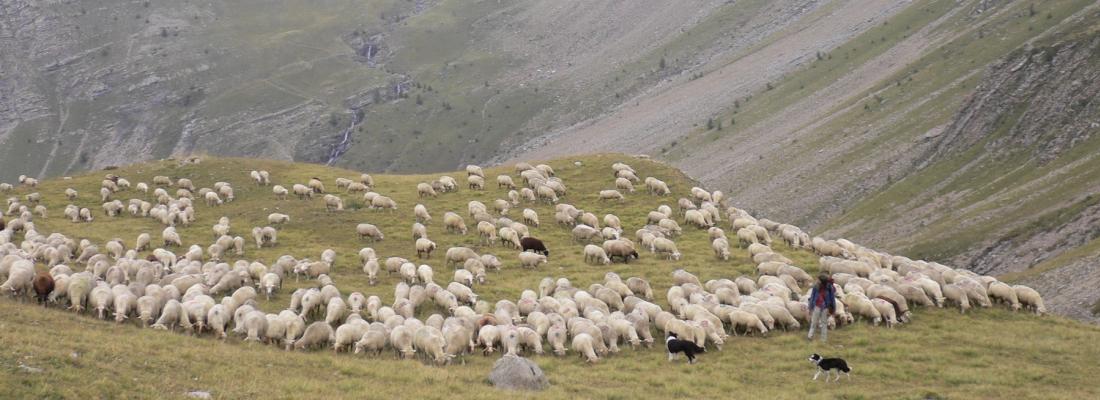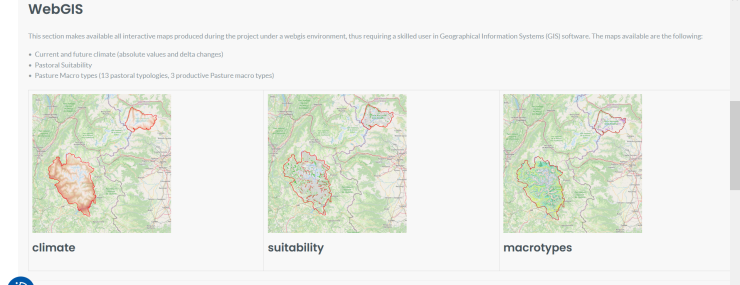Climate change and risks Reading time 3 min
Towards sustainable mountain pastoralism
Published on 08 February 2024

Mountain pastoralism is a traditional agricultural model that judiciously utilizes natural resources: from spring to autumn, animals graze in alpine pastures found at elevations above 2,000 m. This farming approach plays a crucial role in protecting biodiversity, natural landscapes, and mountain ecosystems. It also helps maintain ancestral traditions, strengthen community relationships, and reinforce the cultural identity of local populations. However, grazing systems are increasingly at risk, a situation that is exacerbated by climate change and various economic and sociocultural pressures, such as demographic decline in rural populations. To protect these systems, a collaborative effort was undertaken by agricultural scientists, ecologists, sociologists, economists, government representatives, and local stakeholders (livestock farmers, herders, administrators, and land use managers). The resulting project, LIFE PASTORALP, sought to implement policies and support strategies to help ensure the long-term survival of mountain grazing systems. It specifically focused on two national parks: Écrins in France and Gran Paradiso in Italy.
Employing participatory science to sustain mountain pastoralism
The project highlighted the importance of three key elements for bringing about the sustainable transformation of grazing systems: 1) deploying a methodology that combines climatic and agricultural data obtained in the field; 2) modelling how climatic impacts and modified management practices will affect mountain pastures; and 3) effectively using participatory science and socioeconomic analyses. Researchers conducted interviews with various local stakeholders, which clarified the latter’s needs and expectations. This work also facilitated the co-construction of customized solutions for ensuring the future of mountain grazing systems. For example, these exchanges highlighted some of the stakeholders' major concerns around socioeconomic shifts that are directly impacting their grazing systems, such as changes in the European CAP framework or demographic declines in rural regions, which can greatly hinder knowledge transmission. Farmers are often responding to these uncertain circumstances by engaging in a broader range of activities. Many are becoming involved in mountain tourism.
An interactive platform to guide stakeholders
While climate change is often seen as a distant menace, it is already amplifying interannual oscillations in climatic conditions: high peaks in productivity are followed by extreme drought. This variability can represent a significant challenge when farmers are planning for the grazing period. In addition, it has been found that summer water stress and climate warming are reducing the capacity of pastures to store carbon. In mountainous regions, farmers are adopting the strategy of putting animals out to graze earlier in the year to reduce the risks associated with climatic uncertainty. To facilitate pasture management for livestock farmers and local stakeholders, the project developed a regularly updated interactive platform that is freely accessible to all. The platform has integrated the main practices used in mountain pastoralism, and the resulting data can be employed to analyse the practices’ effects on biodiversity and system vulnerability. The platform also provides real-time access to data collected via cameras and sensors within the two study areas. Information is being gathered on air temperature and humidity, seasonal changes in environmental characteristics, and alpine pasture productivity. Interactive online maps (https://www.pastoralp.eu/tools/#piattaforma_en_webgis) have been made freely available; they show the current state of the mountain pastures and pasture changes in real time (https://www.pastoralp.eu/tools/#piattaforma_monitoraggio_en). These maps utilize field data and satellite imagery in tandem to provide a more comprehensive perspective.

The project found that collaborating with local stakeholders can facilitate the adoption of various adaptation strategies. Recommendations for managers and decision-makers have been published online (https://www.pastoralp.eu/tools/#1675801344545-6afa9011-eea0). They centre on practices for managing mountain pastures and water resources, protecting biodiversity, spurring regional multifunctionality, encouraging a harmonious balance between pastoralism and tourism, and improving cooperation and training.
The project’s dynamic online platform promotes the adoption and dissemination of strategies for adapting to changing climatic and socioeconomic conditions. Additionally, these recommendations can easily be transferred to other alpine and mountain contexts by applying the methods, results, and approaches of the LIFE PASTORALP project.
Life pastoralp in numbers
- Project duration: 2017–2023
- Project budget: €2,314,400
- 8 institutional partners: University of Florence, INRAE, CNRS, Écrins National Park, Gran Paradiso National Park, Regional Agency for the Protection of the Environment - Valle d'Aosta, Regional Agricultural Institute of Italy
- 2 study sites: Écrins National Park (1,788 km²) and Gran Paradiso National Park (710 km²)
- Over 100 project participants (e.g., livestock farmers, herders)
- 1 online tool to map and monitor the two national parks' mountain pastures in real time
- 1 interactive booklet with 40 adaptation strategies for dealing with different climatic risks
- 19 recommendations for decision-makers
LIFE funding programme
LIFE is the EU’s programme for funding actions on environmental and climate issues. Its aim is to provide targeted support for developing, updating, and implementing EU environmental policies and legislation by jointly funding projects with high added value. Launched in 1992, LIFE has co-funded around 4,000 projects across the EU and has directed over 3 billion euros towards environmental protection. LIFE is managed by the EU, which has delegated the programme’s implementation to the EU's Executive Agency for Small and Medium-sized Enterprises (EASME).REFErences
LIFE PASTORALP interactive platform : https://www.pastoralp.eu/outils/#piattaforma_contenuto_fr/
Joint position paper promoted by LIFE PASTORALP project: A step forward common policies for southern European mountain’s pastoral systems. https://www.pastoralp.eu/wp-content/uploads/2023/07/pastoralp_position_paper_MPS.pdf
